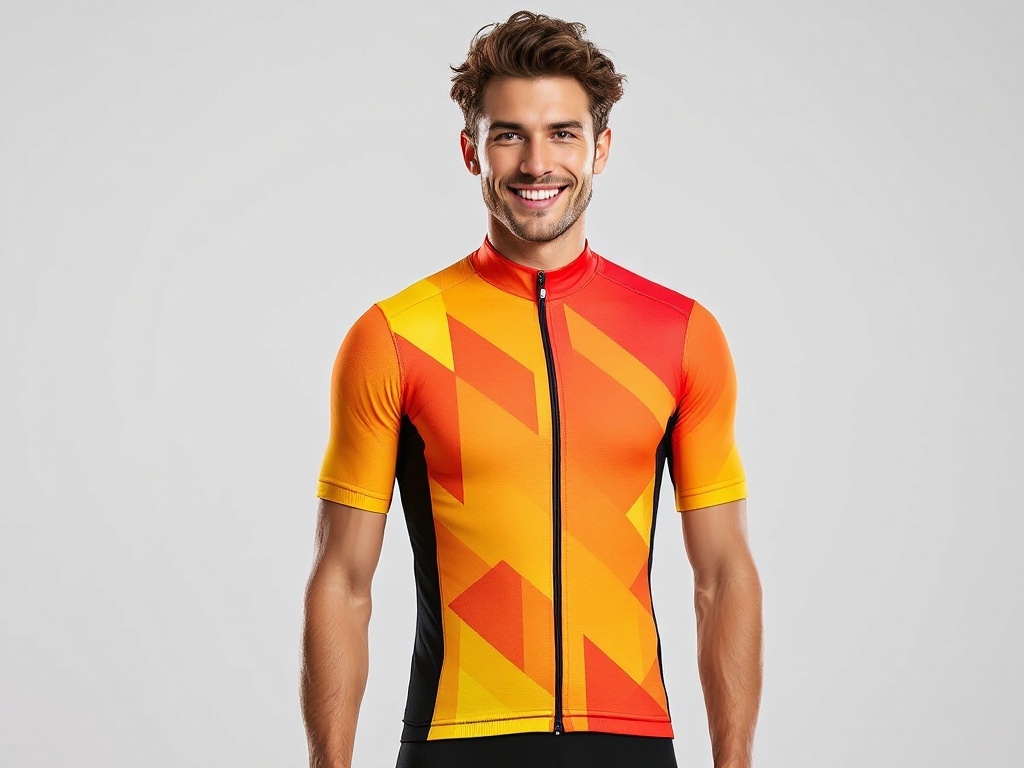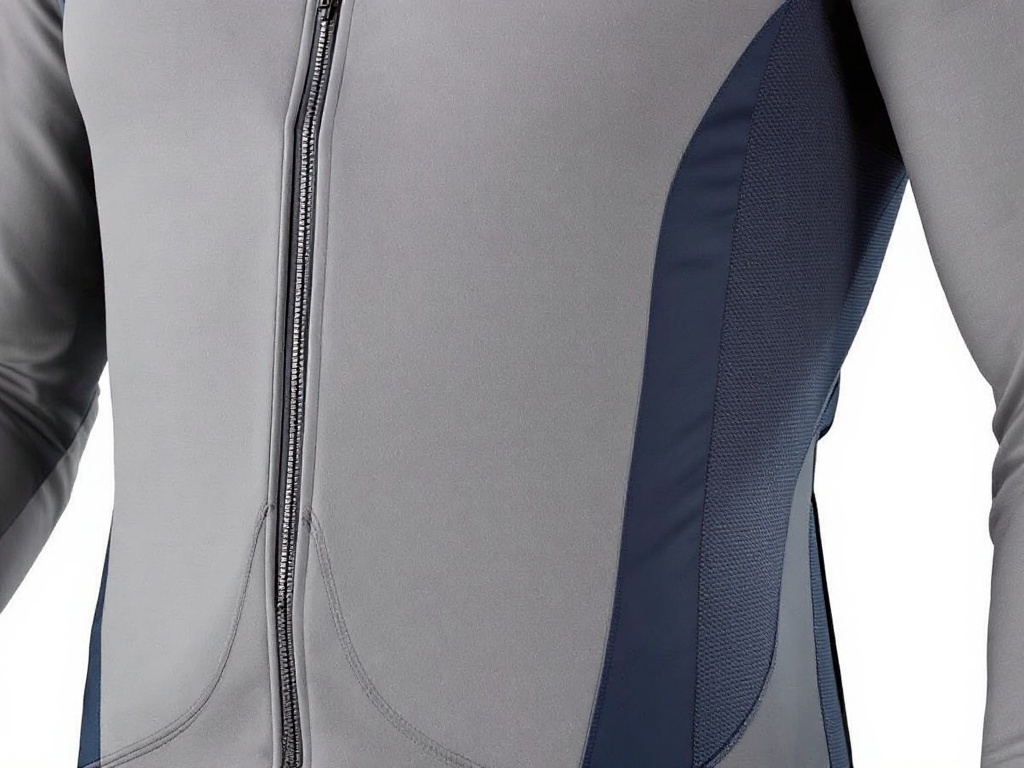What you wear on your bike is not just about looking good; it’s also about staying safe and being visible. Those neon greens and reflective vests? They are more than just a style choice—they can save your life. Additionally, the color of your jersey can influence how you feel and perform while riding. A bright, bold color doesn’t just help you stand out; it can also boost your mood and motivate you to pedal faster. Want to know how? Let’s explore!
Visibility and Safety

Cycling Jerseys are crucial for making cyclists visible, which enhances road safety. Bright, neon colors like fluorescent yellow-green, fluorescent orange-red, and fluorescent red stand out against various backgrounds. These colors are highly visible because they correlate with the wavelengths the human eye perceives best, particularly in daylight. For instance, fluorescent yellow-green is one of the easiest colors to spot during the day due to its wavelength of around 550 nanometers.
When cycling, visibility is essential—it acts as a safety net as you ride at different times of day. During daylight, I rely on fluorescent yellow-green. It stands out, cutting through sunlight and ensuring you’re visible from a distance. As the sun sets and light diminishes, bright orange-red or deep red gear becomes essential. These colors really catch the eye in low light, likely because our eyes adjust to detect those bright hues. When night falls, reflective gear is critical. Reflective vests, ankle bands, and knee reflectors act like mirrors, catching light from headlights and flashlights to help you stay seen. It’s not just about being noticed; it’s about staying safe and shining in the dark.
Bright colors and reflective materials enhance visibility and safety on the road. I’ve found that wearing a reflective vest with ankle and knee reflectors helps you stand out, even on the darkest nights. Fluorescent yellow leggings highlight the motion of pedaling and really grab attention, like a flash of lightning. For optimal protection, I recommend following high-visibility standards like ANSI/ISEA 107-2010. These guidelines ensure you’re using appropriate colors and reflective strips for maximum visibility. Reflective cycling jerseys are not only about safety; they’re also comfortable. The breathable, moisture-wicking fabric keeps you cool during intense rides, while weatherproof features allow you to ride in any conditions. When all these elements come together, they significantly enhance cycling safety by reducing accident risks.
In colder weather, like fall or winter, darker colors are advisable. They absorb heat, helping cyclists stay warmer. Dark shades are both stylish and practical, keeping your body heat in during chilly rides.
Warmer Seasons
In the summer, lighter colors such as white, pastels, or bright neon hues are best. These colors reflect sunlight, helping to keep cyclists cooler by reducing heat absorption. Some studies have shown that white jerseys can be up to 19.6°C cooler than darker ones.
Visibility
Visibility is crucial, especially in summer. Bright, neon colors like fluorescent yellow, orange, and pink stand out in most settings, enhancing safety. These colors make cyclists more visible to drivers, particularly in low-light or poor weather conditions.
Versatility and Maintenance
Having jerseys in different colors allows cyclists to adapt to changing seasons. Lighter jerseys are great for summer but can get dirty quickly, while darker jerseys hide stains better, though they may show wear over time.
Psychological and Emotional Impact
Colors in cycling jerseys serve more than just an aesthetic purpose; they can also influence an athlete’s mental state and performance. The emotional impact of colors affects a cyclist’s mindset and how others perceive them.
Red: Energy and Aggression

Red is associated with energy, strength, and aggression, making it a great choice for cyclists looking to feel alert and energized. Research indicates that athletes who wear red tend to score higher in aggression and dominance, providing them with a competitive edge. This color is often used in the Most Aggressive Rider or Most Combative categories in events like the Tour of California, highlighting its connection to competitiveness.
Orange: Passion and Intensity

Like red, orange stimulates energy and passion. It’s ideal for intense training and helps push through tough moments. The bright tone of orange can elevate an athlete’s mood and fuel their determination.
Blue: Calm and Focus

In contrast to the intensity of red and orange, blue has a calming effect. It represents honesty, calmness, and sincerity. Blue helps reduce fatigue and promotes focus, making it suitable for long rides that require endurance. Studies suggest that blue can also enhance productivity and concentration, supporting cyclists during mentally demanding tasks.
Green: Balance and Nature
Green is linked to nature and tranquility, providing a calming effect that keeps cyclists grounded. It adds to the enjoyment of the ride, especially on scenic routes. High-visibility green shades also enhance safety by making cyclists more visible in varying weather conditions or on busy roads.
Yellow and Neon: Optimism and Visibility
Bright colors like yellow and neon are energetic and attention-grabbing. These colors promote positivity and vibrant emotions, helping to uplift spirits during challenging rides. Yellow, in particular, is associated with cheerfulness and excitement. These colors also improve visibility, making them perfect for early morning or evening rides, ensuring safety in low-light conditions.
Black: Power and Authority
Black conveys power, authority, and mystery. It can boost a cyclist’s sense of strength and mental toughness. Although black jerseys have been linked to increased penalties in team sports due to their aggressive connotations, they can still symbolize power and control in certain competitive settings.
General Impact
The right color can significantly affect a cyclist’s mental state and energy levels. Colors act as a non-verbal language, evoking emotions, sparking reactions, and boosting confidence. Whether enhancing focus, improving visibility, or creating a competitive vibe, the colors cyclists choose can shape their performance and experience.
Maintenance and Stain Resistance
Proper care is essential to keep your cycling jersey in excellent condition. The color you choose can impact both maintenance and stain resistance. Here are some helpful tips to keep your jersey clean and functional.

Lighter Colors
Lighter-colored jerseys can show stains and dirt more easily but excel at managing heat. They’re perfect for hot weather, helping you stay cooler. To care for them:
- Clean them regularly to prevent stains from setting.
- Use mild detergent and cold water to protect the fabric and color.
- For minor stains, spot clean quickly with a damp cloth and a bit of detergent.
- For tougher stains, soak the jersey in cold water with detergent for 15-30 minutes before washing.
Darker Colors
Darker jerseys hide stains better, but they might show wear over time. They also trap more heat, making them suitable for cooler weather. To care for darker jerseys:
- Pre-treat stains gently with a mild detergent and avoid strong chemicals.
- Wash in cold water on a gentle cycle to keep the fabric intact and prevent fading.
- Skip fabric softeners to maintain the jersey’s moisture-wicking properties.
General Care Tips
- Always wash your jersey in cold water to protect its color and fabric.
- Air dry it, keeping it out of direct sunlight to prevent fading and damage.
- If using a dryer, set it to low heat and remove the jersey promptly to avoid overheating the fabric.
Personal Style and Fashion

The color of a cycling jersey is a fantastic way to express personal style. With a variety of colors and designs to choose from, cyclists can showcase their individuality through their jersey. From classic solid colors to vibrant patterns or team-inspired designs, each jersey reflects the wearer’s personality and cycling identity.
Expression of Individuality
- Cycling jerseys provide an opportunity to display personal taste.
- Whether you prefer subtle shades or bold, colorful patterns, there are plenty of options for self-expression.
- The color and design can reflect your style, whether minimalist or daring.
Fashion Trends
- Cycling jerseys have evolved beyond just athletic wear; they now make a fashion statement.
- They are key players in the athleisure trend, merging style with performance.
- Many cyclists wear jerseys not only for sports but also as part of their everyday wardrobe.
Nostalgia and Retro Revival
- Vintage-inspired designs are making a comeback, featuring bold graphics from the ’80s and ’90s.
- These retro jerseys offer a refreshing break from modern trends and appeal to both cycling enthusiasts and casual wearers.
- Wearing a retro jersey allows you to connect with the past while staying trendy.
Versatile Appeal
- Cycling jerseys are no longer just for biking; they are seen on runways and city streets.
- Their form-fitting shape and sporty design make them a versatile addition to many wardrobes.
- You can easily pair them with casual or activewear, making cycling jerseys a statement of comfort and style.
Seasonal and Personal Preferences
- The color and design of cycling jerseys can be chosen to fit different seasons.
- Having a variety of jerseys ensures comfort and style year-round, adapting to weather changes or personal moods.
Design Elements
The jersey features bold geometric patterns and abstract shapes, transforming it into a creative canvas. Every time I wear it, I feel invigorated; it’s like wearing a masterpiece that empowers my spirit. I step onto the field, ready to face any challenge with style.
Material and Comfort

Breathable Fabrics
Cycling jerseys are often made from synthetic materials like polyester or nylon blends. These fabrics breathe well and wick away moisture, featuring tiny channels that pull sweat off your skin and allow it to evaporate quickly, helping you stay cool and dry.
Moisture Management
Cycling jerseys are designed to manage moisture effectively. They draw sweat away from your skin and transfer it to the outer layer, where it dries faster. This keeps you dry and comfortable, even on long or intense rides.
Quick-Drying Technology
Cycling jerseys dry quickly. They efficiently evaporate sweat, which is beneficial for long rides or unexpected rain, preventing you from feeling weighed down or chilled.
Ventilation and Airflow
Many jerseys include ventilation panels or mesh inserts in areas like the underarms, back, or sides, where sweat tends to accumulate. These zones allow cool air to circulate, removing excess heat and keeping you comfortable.
Comfort in Different Fabrics
Polyester: Polyester jerseys are common and easy to clean. While they might retain odors after intense rides, higher-quality polyester, such as that in the Garneau Lemmon 2, feels like soft cotton and offers great comfort in warm, humid conditions.
Merino Wool: Merino wool is naturally moisture-wicking and odor-resistant, making it an excellent choice for longer rides or cooler weather. The Concept Merino jersey, made with 3/4 merino wool, is breathable and comfortable, ideal for bikepacking or cooler seasons.
Fit and Design
Cycling jerseys are designed to fit snugly without being restrictive. This aids moisture transfer and comfort. Many have a longer back panel to prevent the jersey from riding up while cycling. Full-length zippers enhance airflow for intense rides or hot days.
Layering Capability
Cycling jerseys fit into a flexible layering system. In warmer weather, they can be worn alone. In cooler conditions, you can add a base layer or arm warmers underneath without compromising the jersey’s moisture-wicking ability. This versatility makes them suitable for varying weather conditions.
Additional Tips

When selecting the right cycling jersey, consider more than just color. Here are some tips to enhance your cycling experience:
Visibility and Safety
Bright, neon colors like yellow, orange, and pink help you stand out, making you more visible to drivers and other cyclists, thereby reducing accidents. Colors like red, yellow, and orange are easier for drivers to see, especially in low light. Adding reflective elements can further enhance visibility.
Seasonal Considerations
- In cooler weather, darker colors are preferable because they absorb heat and keep you warm. Dark jerseys work well for winter and fall rides.
- During summer, lighter and brighter colors are better. They help keep you cool while ensuring visibility. It’s wise to have different jerseys for various seasons to remain comfortable.
Reflective Elements
- Jerseys with reflective strips or patches enhance visibility in low-light conditions. This is particularly helpful for early morning or evening rides, or in inclement weather like rain or fog.
- Studies show that wearing a reflective vest with ankle and knee reflectors is more effective at night than a vest alone.
Ventilation and Comfort
Choose jerseys made from breathable fabrics that wick moisture away to keep you cool and dry. Lighter-colored jerseys, like white, can be up to 19.6°C cooler than darker ones, helping regulate your body temperature better in the heat.
Maintenance
Lighter-colored jerseys show dirt and stains more easily, requiring more frequent cleaning. Darker colors hide stains but may show wear and tear more quickly. Choose a color based on your riding conditions and your willingness to maintain it.
Enhancing Conspicuity
Adding fluorescent yellow leggings can improve visibility, particularly by highlighting your pedaling motion, which differs from other movements like walking or jogging. Combining fluorescent clothing with reflective elements increases visibility and can help reduce the risk of serious injury.
UV Protection
Look for jerseys with built-in UV protection (SPF30+ or higher). This protects your skin from harmful sun exposure and eliminates the need for sunscreen or extra layers.
Balancing Discreetness and Safety
If you prefer a more subtle look while remaining visible, choose jerseys with simple patterns or accents that stand out in high-traffic areas. Pairing a fluorescent jersey with leggings can enhance visibility without being overly flashy.
Summary
Ultimately, the color of your cycling jersey is more than just a style choice—it’s a vital tool for safety and performance. By selecting the right colors for visibility and comfort, you enhance your ride and ensure you’re seen and safe on the road. I choose carefully, ride safely, and let my jersey reflect my personality and commitment to a secure cycling experience.
For more information on cycling gear, visit fexwear.com.
